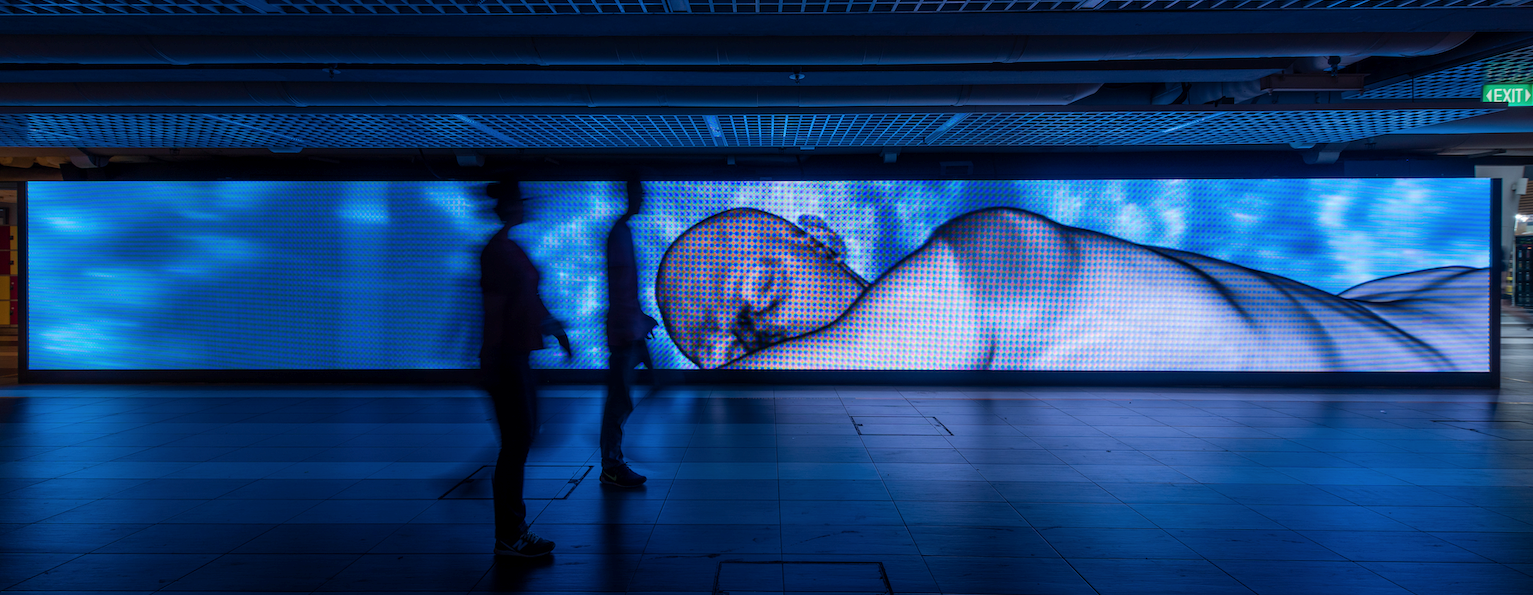INTERPRETING THE HUMAN BODY
Art Form | Immersive stereoscopic 3D & large-scale 2D installation. Exhibition in coordination with Fraunhofer MEVIS.
Motivation | Understanding and negotiating complex issues in digital medicine require expertise, time, and dedication. But who is developing new technological possibilities, telling their stories, and shaping the medical future? The immersive installation is based on reflections about researchers and their curiosity and creativity in dealing with issues that can only be penetrated through technical, scientific, and mathematical understanding. The installation shows a floating human body, and looks into an organ down to a layer of tissue that, when magnified, reveals itself as the space-like environment with star-like lights in which the body floats.
Methodology & Implementation | The project shows different scales of the human body, from digitized microscopic lymphoma tissue examined with the molecular cytogenetic technique Fluorescent in situ hybridization (FISH) to detect abnormal changes in DNA, to 3D reconstructions of two vessel systems of a liver for patient-individual surgery planning as well as a whole-body MRI.
Scientific background | Fraunhofer MEVIS researches and develops MR sequences for clinical practice, software for automatic and precise analysis of tissue sections for digital pathology, and is a pioneer in combining and analysing medical data for better information integration and decision support for medical professionals.
Immersive, interactive, and artistic experiences enable emotional, positive engagement with digital medicine and required STEM sciences. The goal is to add educational programs to scientifically informed art exhibitions and engage diverse audiences in the wonders of the human body and the constructive possibilities of new technologies. The work was launched in the Deep Space 8K at the Ars Electronica Center in Linz, Austria, and simultaneously at the Media Art Nexus (MAN) at Nanyang Technological University Singapore in in 2018. The project was recognized by the scientific documentary industry and won the Industry Award for Best Infographic at Raw Science Film Festival 2019, held in Los Angeles, USA.
Credits | Directors and Science & Art Producer: Bianka Hofmann, Alexander Köhn, Mathias Neugebauer; Scientific Advice: Henning Höfener, Andre Homeyer; Fraunhofer MEVIS. Sound: David Black; in cooperation with Ina Conradi and Mark Chavez, Media Art Nexus, Nanyang Technological University Singapore; Fluorescent in situ hybridization (FISH) data kindly provided by ZytoVision; special thanks to Volker Diehl, Jochen Hirsch, Julian Haase, and Dagmar Weiß
 Fraunhofer Institute for Digital Medicine MEVIS
Fraunhofer Institute for Digital Medicine MEVIS